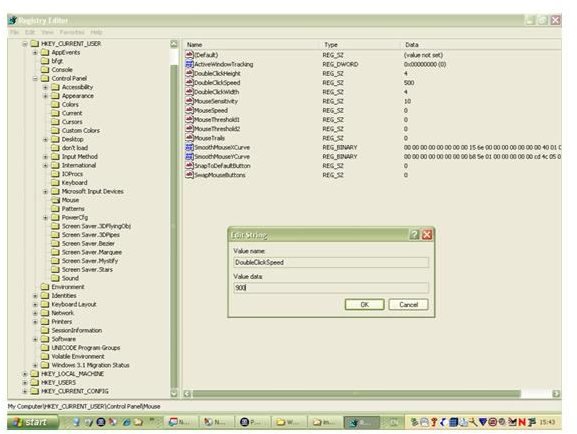How to Use the Windows Registry Editor? Tweaking Regedit
To the naked eye, the windows registry is a maze of unintuitive headings with incomprehensible values. However, as complex as the visual side of the windows registry looks, the act of making a change is frighteningly easy. There is no ‘save’ button in the registry editor and no ‘undo’ facility to fall back on in the event of entry errors. What is more, although some value changes require a reboot of windows to take effect, many changes are immediate. It is therefore of paramount importance that when editing the windows registry, you are aware of what you are doing - at all time, otherwise you may jeopardize PC stability.
With this in mind it is advisable to make a note of all keys and values that you wish to change, and for ultra resilience, to create a system restore point prior to making any changes to the windows registry. This will provide you with a fall-back point to when Windows was stable, if it is found that the system has now been compromised by changes in the registry.
Restore points in Windows XP
To create a restore point in Windows XP, choose Start - Help and Support - Performance and Maintenance - Undo changes to your computer with System Restore – Create a Restore Point and progress through the wizard.
To revert back to a previous restore point in Windows XP, choose Start - Help and Support - Performance and Maintenance - Undo changes to your computer with System Restore – Restore my computer to an earlier time – Select the restore point that you previously created, or one from a previous date in time.
Restore points in Windows Vista
To create a restore point in Windows Vista, choose Control Panel – Advanced System Settings – System Protection - Click the ‘Create’ button. You’ll be prompted to enter a name for the restore point.
To revert back to a previous restore point in Windows Vista, choose Start – All Programs – Accessories – System Tools – System Restore. By default, Vista selects a recommended restore point. You can change this by selecting ‘Choose a different restore point’.
Having created a restore point you can now confidently launch and make changes to the windows registry. To launch the registry editor in Windows XP choose Start - Run - type ‘regedit’ – OK. To launch the registry editor in Windows Vista choose Start Search - type ‘regedit’ – OK.
Editing a registry setting
The first time you enter the windows registry you will see that the HKEY_CURRENT_USER hive is selected. Any subsequent launch of the registry editor will launch in the last edited hive. Navigation of the registry itself is simple, by clicking on the ‘+’ or ‘-‘ symbols to drill down into one of the hive ‘Folders’ or by using the arrow keys and find facility.
In the registry editor you can create, edit or delete keys and values, and different changes take effect in different ways, either by simply OK’ing the configuration value change, logging off or rebooting the PC.
Let’s take a look at a simple setting change - Mouse double-click speed, which amends the maximum time that can elapse between two mouse clicks for a double-click action to be performed.
- Launch regedit
- Navigate to HKEY_CURRENT_USER/Control/Mouse
- Several configuration ‘keys’ will be displayed in the right hand pane. Open the ‘DoubleClickSpeed’ key
The default value of ‘500’ is the time allowed between each click of a double click action. The larger the number, the greater the length of time windows will allow for the double click to still be active. Alternatively the shorter the number the less time will be allowed between each click for a double click to work.
- Set the value data to ‘900’ (maximum allowed) and select OK.
Have a play with the mouse, testing the double click speed. You will notice the computer allows the double click to be performed in a much more leisurely fashion.
- Set the number to ‘100’ (minimum allowed) and select OK.
Now the mouse will demand a rapid double click to perform the required action.
This is a basic windows registry edit. There are hundreds of such minor (and major) changes that can be made in the registry and all make a considerable difference to the ease with which your personal computer experience is delivered. In the following article we will look at a selection of good practice examples where a registry edit may prove useful.
This post is part of the series: Windows Registry User Guide
An Introduction to the Windows Registry, looking at the structure of the registry, how it can be tweaked and changed to optimize PC performance and what is the best software for cleaning the Windows Registry.
- An Introduction To The Windows Registry
- The Windows Registry Editor Hierarchical Structure - Hives, Keys & Values
- What is the Windows Registry? Tweaking the Registry Editor
- Optimizing the Windows Registry - Good Practice & Top Registry Edits
- Optimizing the Windows Registry - The Best Windows PC Cleaning Software for the Registry Editor
